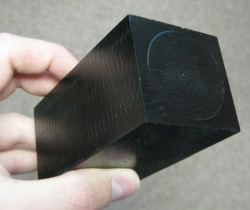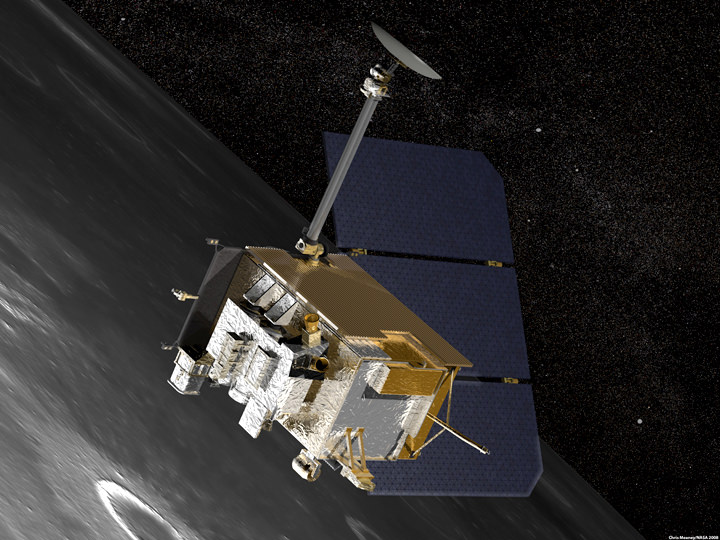It could work, say researchers from the University of New Hampshire and the Southwest Research Institute.
One of the inherent dangers of space travel and long-term exploration missions beyond Earth is the constant barrage of radiation, both from our own Sun and in the form of high-energy particles originating from outside the Solar System called cosmic rays. Extended exposure can result in cellular damage and increased risks of cancer at the very least, and in large doses could even result in death. If we want human astronauts to set up permanent outposts on the Moon, explore the dunes and canyons of Mars, or mine asteroids for their valuable resources, we will first need to develop adequate (and reasonably economical) protection from dangerous space radiation… or else such endeavors will be nothing more than glorified suicide missions.
While layers of rock, soil, or water could protect against cosmic rays, we haven’t yet developed the technology to hollow out asteroids for spaceships or build stone spacesuits (and sending large amounts of such heavy materials into space isn’t yet cost-effective.) Luckily, there may be a much easier way to protect astronauts from cosmic rays — using lightweight plastics.
While aluminum has always been the primary material in spacecraft construction, it provides relatively little protection against high-energy cosmic rays and can add so much mass to spacecraft that they become cost-prohibitive to launch.
Using observations made by the Cosmic Ray Telescope for the Effects of Radiation (CRaTER) orbiting the Moon aboard LRO, researchers from UNH and SwRI have found that plastics, adequately designed, can provide better protection than aluminum or other heavier materials.
“This is the first study using observations from space to confirm what has been thought for some time—that plastics and other lightweight materials are pound-for-pound more effective for shielding against cosmic radiation than aluminum,” said Cary Zeitlin of the SwRI Earth, Oceans, and Space Department at UNH. “Shielding can’t entirely solve the radiation exposure problem in deep space, but there are clear differences in effectiveness of different materials.”
Zeitlin is lead author of a paper published online in the American Geophysical Union journal Space Weather.

The plastic-aluminum comparison was made in earlier ground-based tests using beams of heavy particles to simulate cosmic rays. “The shielding effectiveness of the plastic in space is very much in line with what we discovered from the beam experiments, so we’ve gained a lot of confidence in the conclusions we drew from that work,” says Zeitlin. “Anything with high hydrogen content, including water, would work well.”
The space-based results were a product of CRaTER’s ability to accurately gauge the radiation dose of cosmic rays after passing through a material known as “tissue-equivalent plastic,” which simulates human muscle tissue.
(It may not look like human tissue, but it collects energy from cosmic particles in much the same way.)
Prior to CRaTER and recent measurements by the Radiation Assessment Detector (RAD) on the Mars rover Curiosity, the effects of thick shielding on cosmic rays had only been simulated in computer models and in particle accelerators, with little observational data from deep space.
The CRaTER observations have validated the models and the ground-based measurements, meaning that lightweight shielding materials could safely be used for long missions — provided their structural properties can be made adequate to withstand the rigors of spaceflight.
Sources: EurekAlert and CRaTER@UNH


Son – one word:
What’s that?
PLASTICS.
The Graduate was RIGHT!
Whaaaaaaaaaaaaaaaat?
Interesting and also VERY timely and important considering recent data from radiation monitoring aboard MSL during transit to Mars! What other hydrogen filled molecules might work? Hydrogenation of fats and oils anyone?
Paraffin has also been talked about a lot…
1967 Dustin Hoffman movie 🙂
Luke Scott is a detriment to your club. Please trade Luke Scott. You’re wasting your money and holding potential talent from getting a chance.
This looks great it would allow for Lunar and Mars colonies and I hope cheap protection in space.
No high-tech, exotic plastics will ever be effective against sand grain-sized or larger objects traveling at 100,000 kmh or faster.
Why is plastic better than aluminium?
Different ordering of the atoms causing a bigger chance to be hit by an cosmic-ray?
Perhaps for long missions a series of thin concentric shells layered for micrometeorite protection (like Cassini) with water stored between the shells. Long missions will need backup water in addition to recycling in any case,